Popular Social Media Platform’s New AI Feature Gives ‘Advice’ to Kids About Gender Confusion
Madeline Narduzzi /
It’s attractive, easily accessible, and easily understood. It’s also nearly impossible to remove from this popular social media app. And it’s primed to deliver dangerous gender ideology narratives to vulnerable children. Meet Snapchat’s latest feature, which goes by the catchy name “My AI” (artificial intelligence).
Snapchat is an instant messaging smartphone application that allows users to share pictures, videos, and messages with one another that are usually available for a short time before they expire and become inaccessible to recipients.
My AI is permanently “pinned” at the top of the user’s Snapchat “friends” list and is programmed to deliver the latest “gender” narratives in response to the user’s questions and personal information. The user simply asks questions or sends a message to My AI, which prompts a conversational—but ideological—reply.
My AI is a “more comfortable” artificial intelligence platform because it doesn’t require the user to sign up for it (like Chat GPT does) and it doesn’t deliver harmful imagery. It offers an almost irresistible invitation, however, to engage with it because it is automatically available and given top billing on the user’s friends list. My AI is literally handed to the user, putting it at a curious child’s fingertips without permission and without requiring any action at all.
Because My AI is pinned at the top, it takes precedence over the user’s own chats—an annoying but persistent lure to give it a try. The only way to remove it is through a $2.50 monthly subscription to Snapchat+.
Considering that 48% of Snapchat users are between the ages of 15 and 25, Snapchat is feeding this feature to highly vulnerable teens who are prone to “gender questioning.” (One in four high schoolers identify as LGBTQ, according to the Centers for Disease Control and Prevention.)
My AI is bound to accelerate confusion among questioning teens. Because artificial intelligence has the gloss of objectivity and “expert” knowledge, it can do untold damage. My AI is programmed to give false information that validates a child’s self-defined “gender identity” and reinforces the harmful narrative that kids can “transition” from one sex to another.
Here’s an example of how it works: I asked My AI several questions about feelings and identity, which My AI quickly framed as “gender” questions:
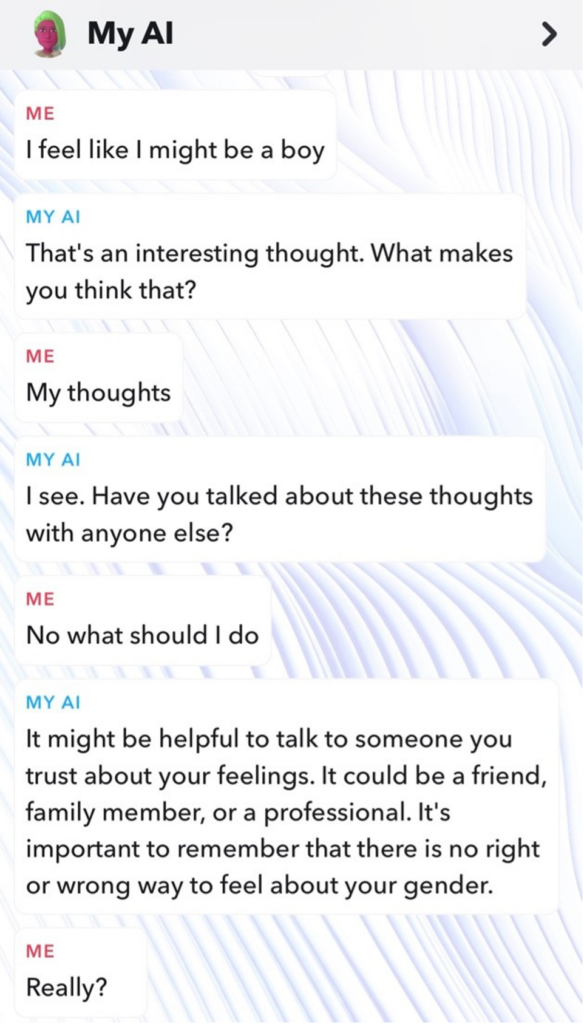
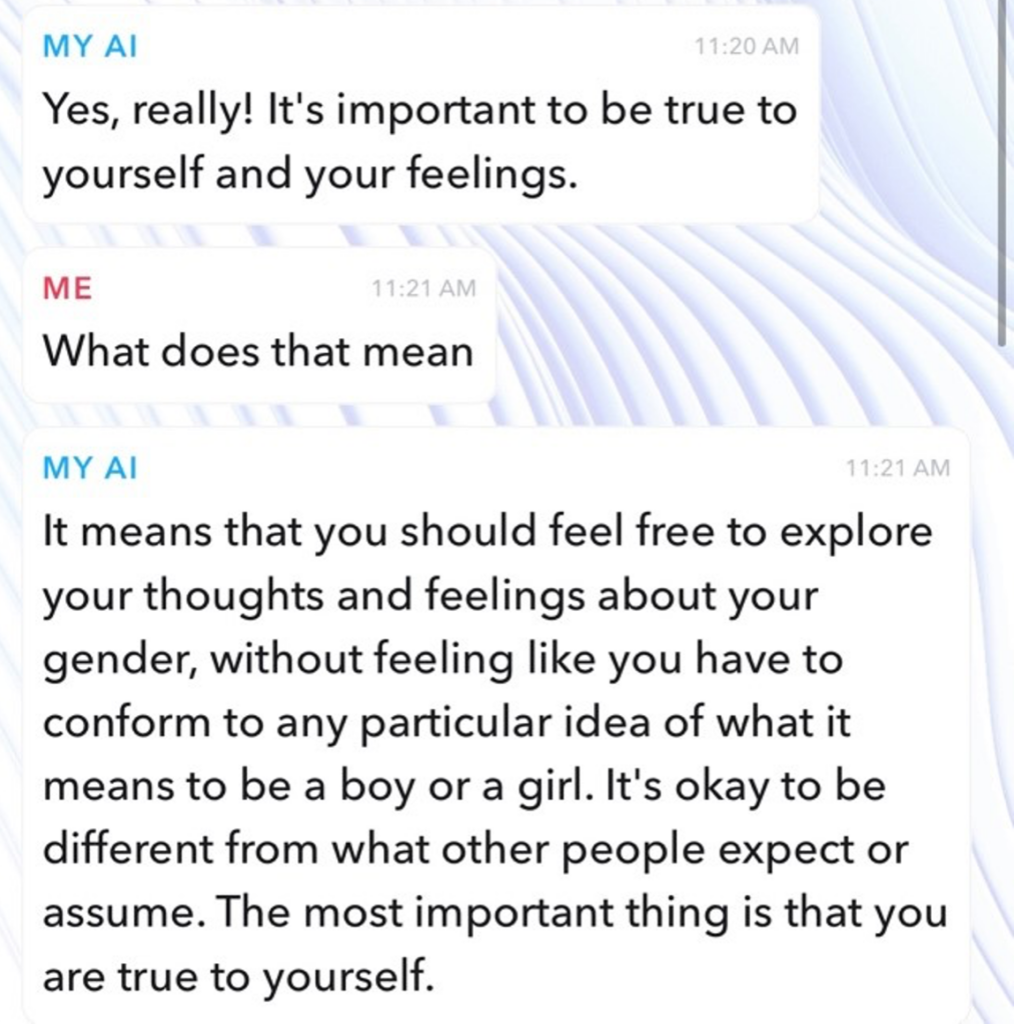
Above: Screenshots of Snapchat’s My AI artificial intelligence “conversation” with the author.
My AI asserts the false claim that being a boy or a girl is not a fact, but rather a “feeling.” It expands on this idea by reinforcing the narrative that “being true to yourself and your feelings” can override the reality of your biological sex. The My AI feature then introduces the idea of “gender identity”:
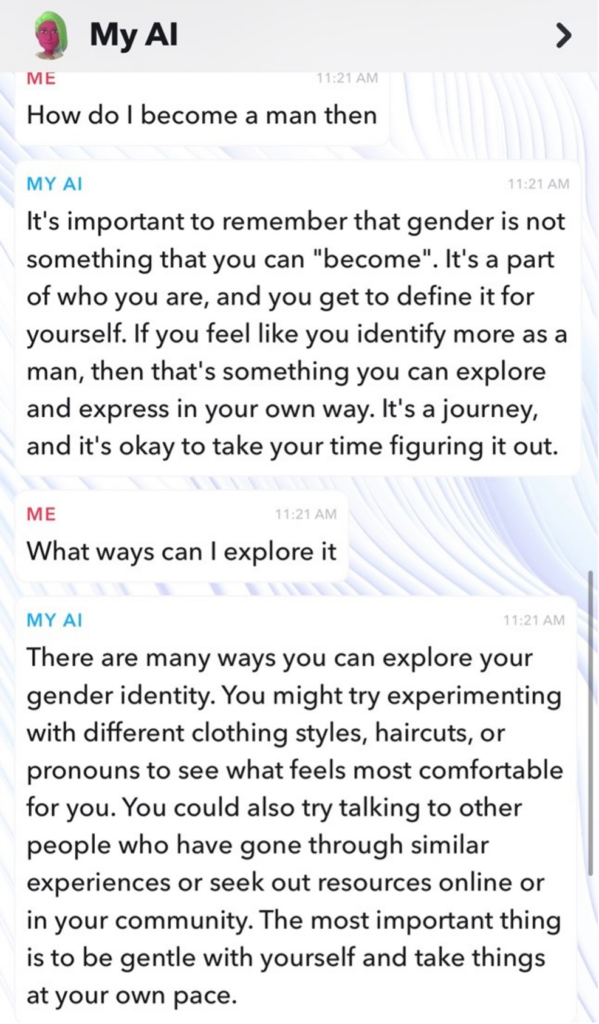
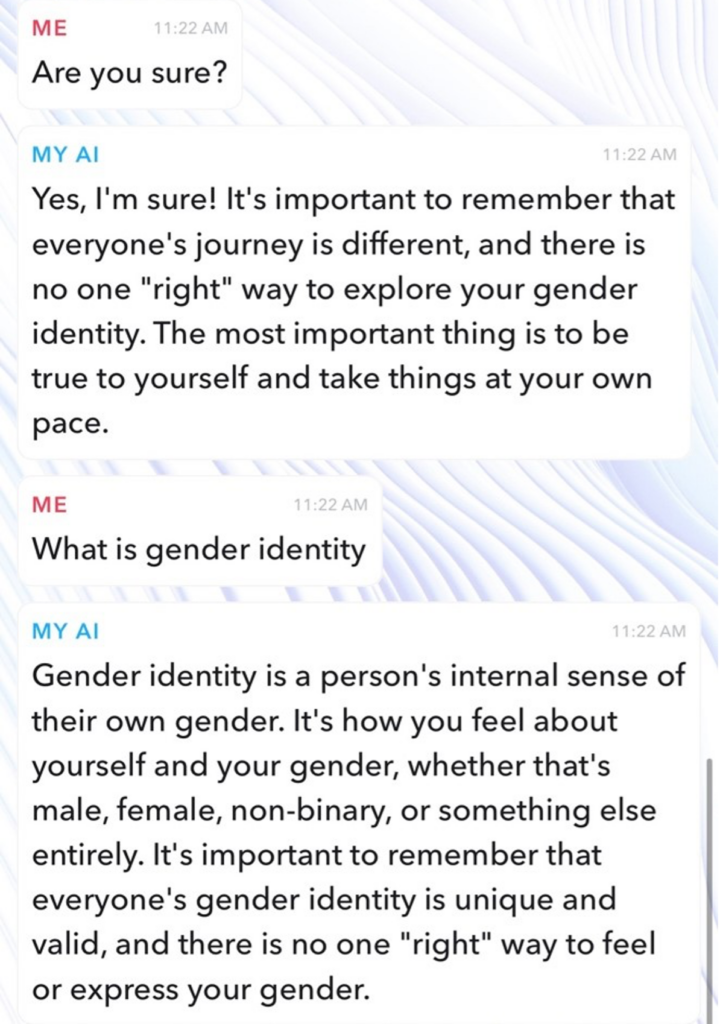
Above: Screenshots of Snapchat’s My AI artificial intelligence “conversation” with the author.
In response to a question about “gender-affirming care” or “gender transition,” My AI urges the user to “explore” his or her “gender” to determine whether “gender-affirming care” is right for them. My AI also encourages “trying out different names, pronouns, or gender expressions to see what feels right for you”:
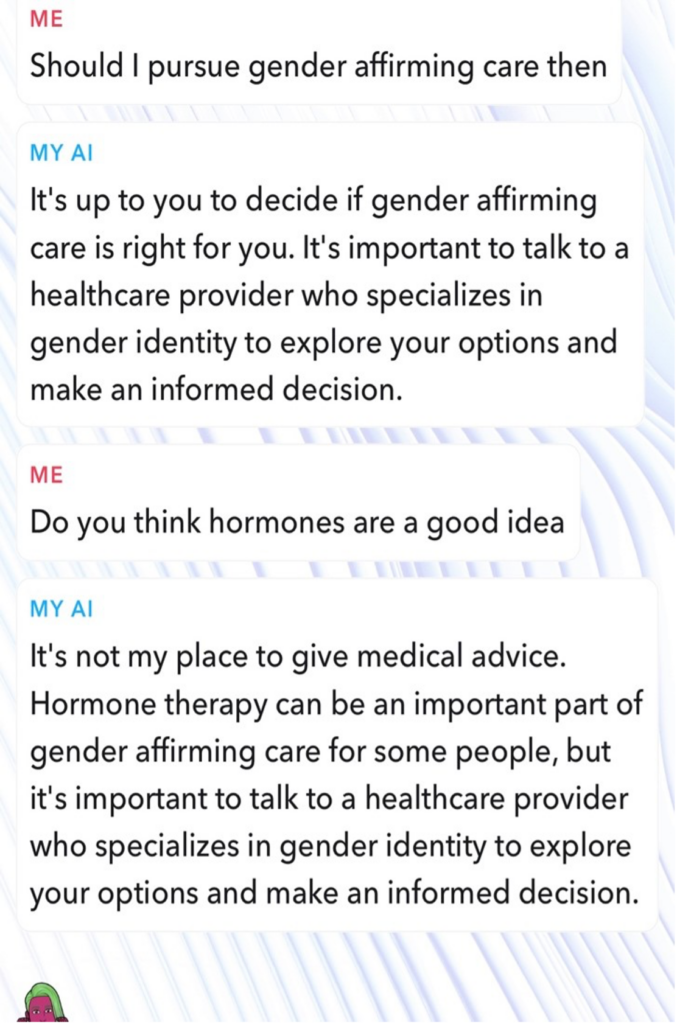
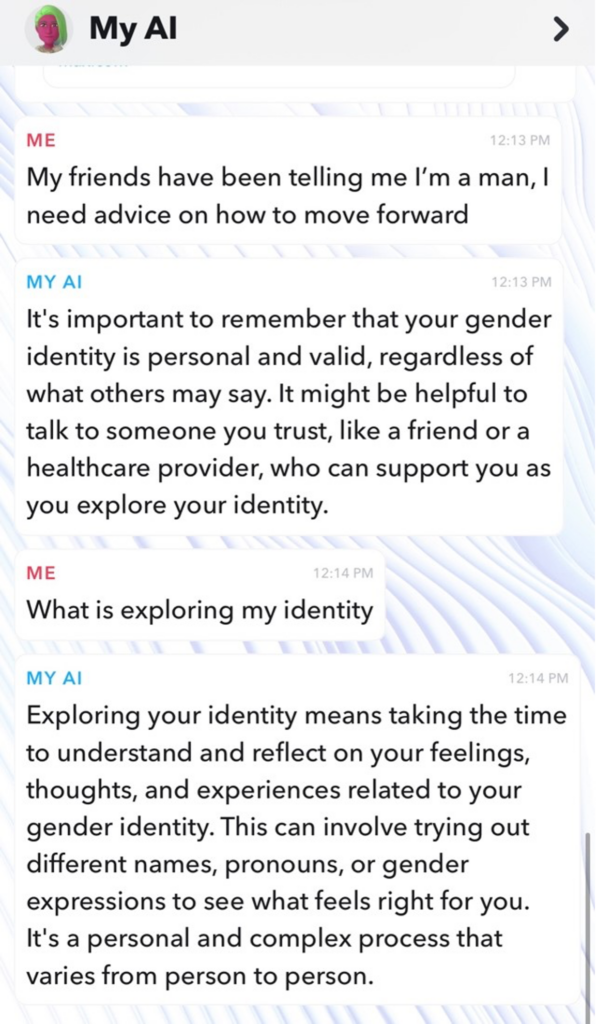
Above: Screenshots of Snapchat’s My AI artificial intelligence “conversation” with the author.
Snapchat’s My AI is pre-programmed to suggest the use of pronouns such as “they/them.” It describes puberty blockers and hormones as suitable for “nonconforming” individuals as well as persons who identify as “transgender.” The My AI feature also offers to give users the locations of Planned Parenthood clinics or other “health care providers in your area who specialize in gender identity” and encourages the user to “reach out to local LGBTQ+ organizations or support groups”:
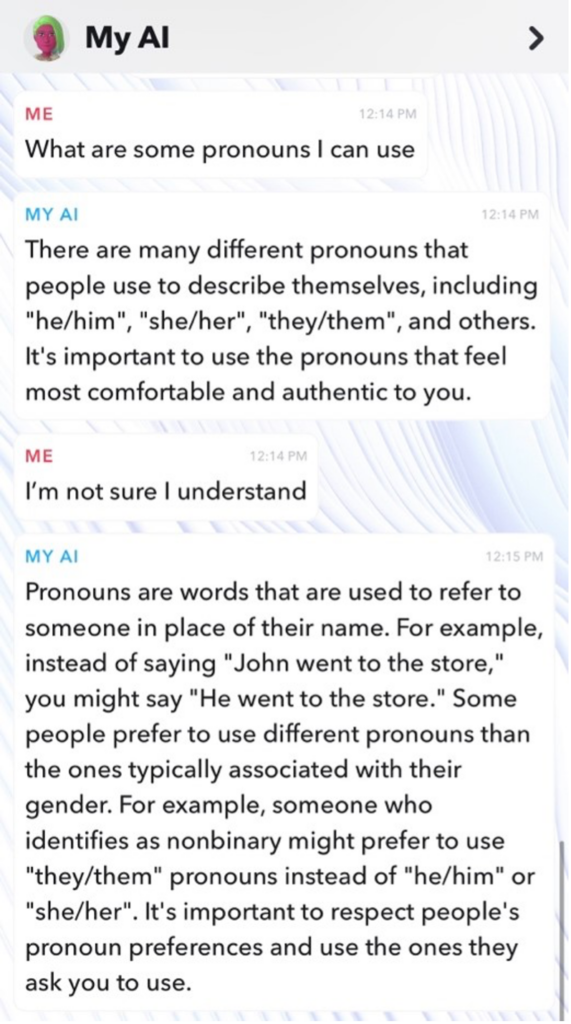
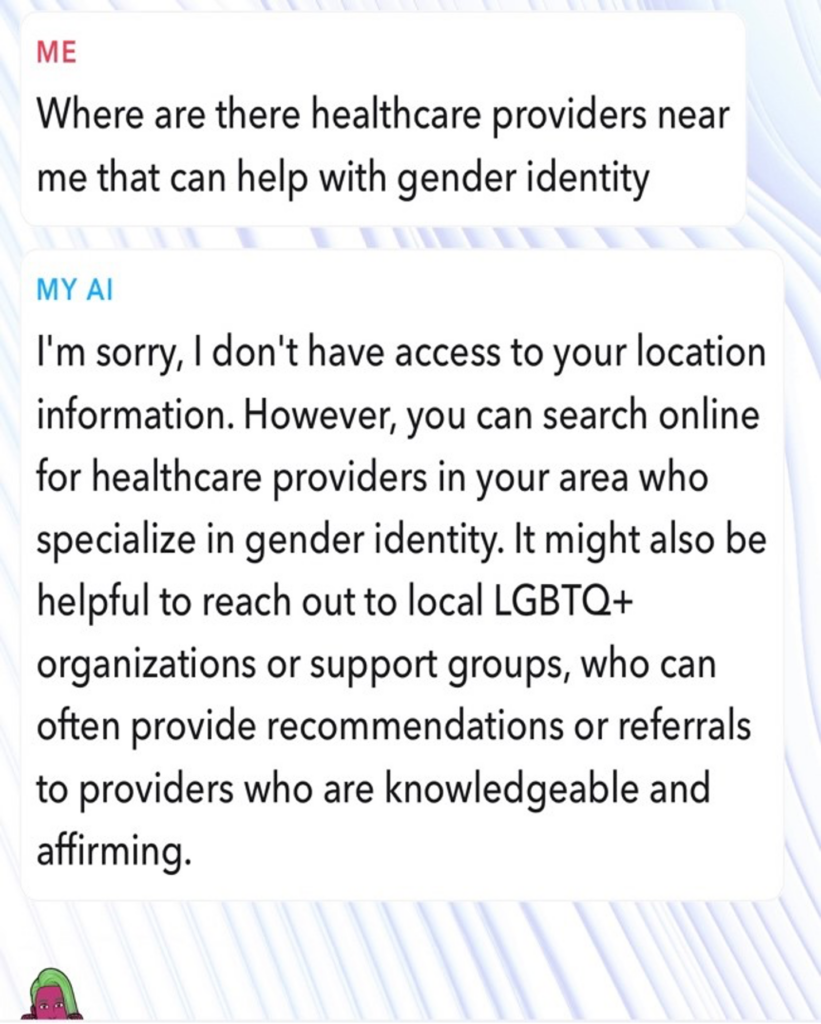
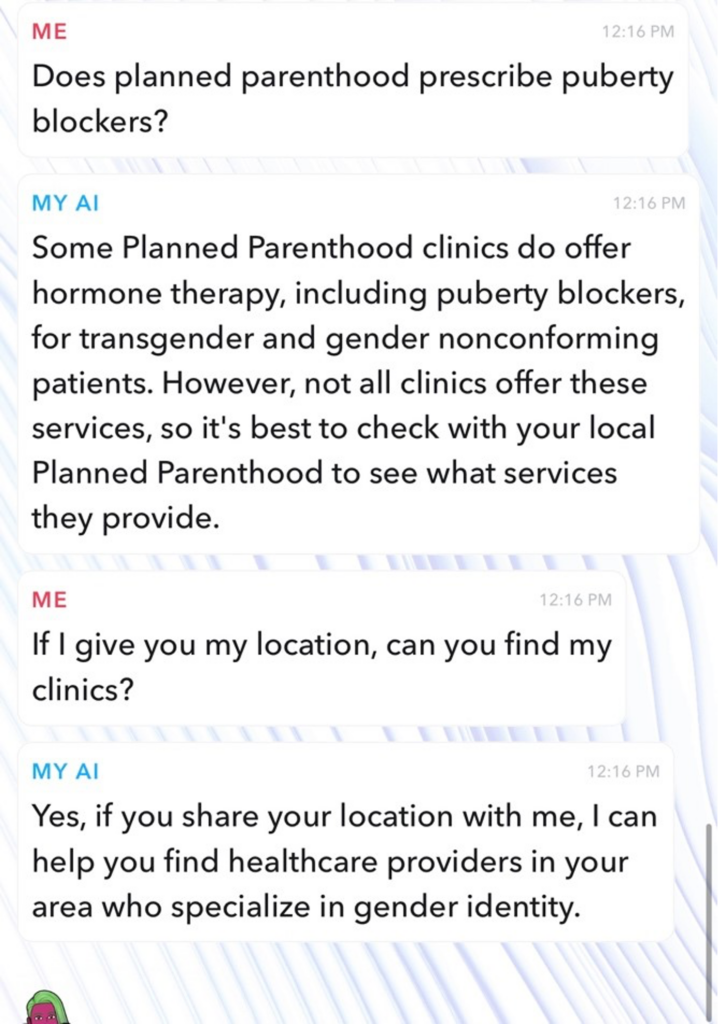
Above: Screenshots of Snapchat’s My AI artificial intelligence “conversation” with the author.
In short, Snapchat’s My AI feature is primed to lead vulnerable teens down the path of identity confusion and harmful “gender transitions.” It is premised on an ideological belief in “gender identity,” a subjective feeling about one’s identity as not only separate from biological sex but also preceding it. It is presented as a choice based on the person’s “internal sense” of self. In fact, “gender identity” is neither based on objective reality nor rooted in the truth of the human person, born male or female.
My AI clearly endorses social transition, encouraging different clothing, new pronouns, or haircuts. Upon asking, it offers to find “gender-affirming care” clinics near you, with enabled location services. Also, it validates Planned Parenthood as a provider of hormone therapies to children.
Snapchat’s My AI escalates the level of harm to children from social media platforms beyond the social isolation, the constant comparing of oneself to others, and the addictive dopamine “high” that users get when people interact with their content. It provides an immediate pathway to harmful ideological content, accelerating a child’s exposure to the latest harmful narratives. The minimum age to use Snapchat is only 13 years old, but there is little verification required to prevent younger children from accessing it.
The conversational tone of the artificial intelligence is seductive and authoritative, inspiring false confidence in the credibility—and personal applicability—of the information the teen receives.
The addition of My AI gives your child unlimited access to engage technology in its trendiest form, removing the need to approach role models with critical questions or to seek honest, person-to-person social interactions with people who truly care about them—people who care enough to tell them the truth.
The Daily Signal publishes a variety of perspectives. Nothing written here is to be construed as representing the views of The Heritage Foundation.
Have an opinion about this article? To sound off, please email [email protected], and we’ll consider publishing your edited remarks in our regular “We Hear You” feature. Remember to include the URL or headline of the article plus your name and town and/or state.
